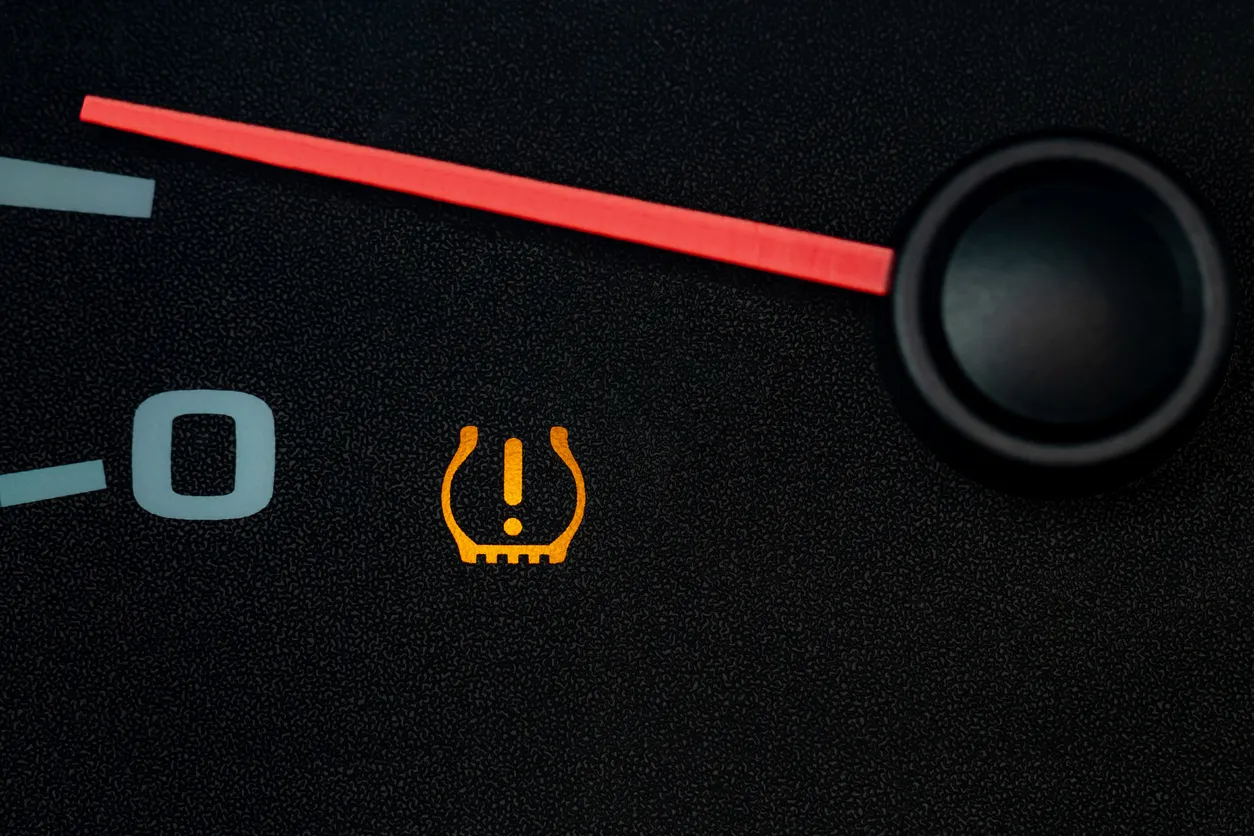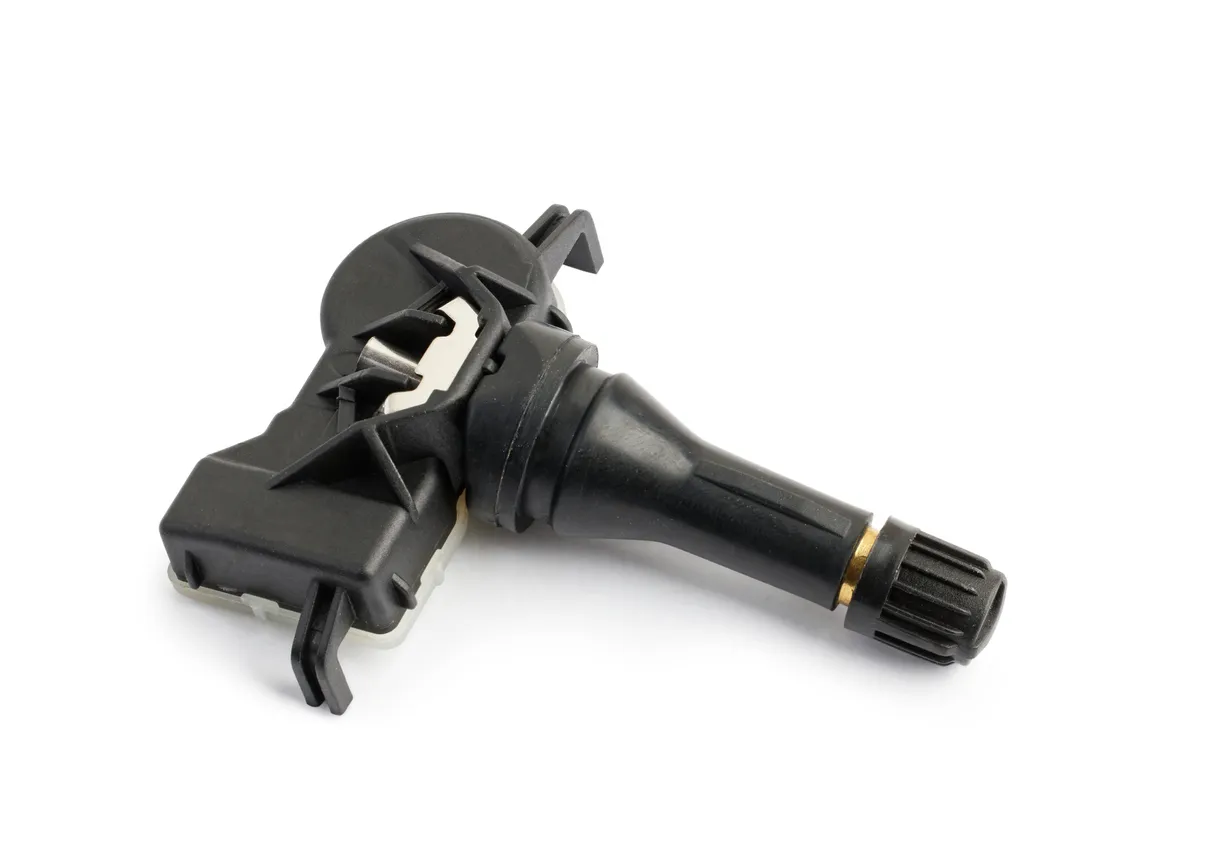What Is Tire Pressure Monitoring System (TPMS)?

A tire pressure monitoring system (TPMS) is a specialized system on a vehicle that can help you monitor your tires so you can be sure they have enough air and that you can drive safely. Allowing your tires to lose too much air reduces your vehicle's fuel efficiency and also has the potential to damage your tires. That's why it's so beneficial to have a vehicle with a TPMS sensor installed on each of your wheels. If you aren't sure what this special sensor and system is designed for, we'll overview what TPMS means, how it works, and why it's important below.
What Is a TPMS Sensor?
If you've ever heard the phrase TPMS and wondered, "What does TPMS mean?" now is the time to find out. TPMS stands for tire pressure monitoring system, and it is a series of sensors that tracks the pressure of each tire on your vehicle.
There are a few different types of TPMS sensors, but the tire sensor meaning is the same no matter which you have in your vehicle. If your car comes with a tire pressure sensor, you will know what pressures your tires are at and when they hit the threshold for the TPMS light to come on, alerting you to add air.
How Do Tire Pressure Sensors Work?
Tire pressure sensors work in a few different ways. The simplest way these sensors work is by detecting how quickly each tire rotates individually. These sensors adjust the pressure level as your tire begins rotating more quickly because the theory is that a less inflated tire must rotate faster to keep pace with the other tires.
More modern tire sensors take direct measurements of the air in the tire itself. When they are functioning, they offer more accurate readings. However, these direct tire pressure sensor options suffer from failures more often than indirect sensors do.
What Is TPMS Light?
Sometimes the TPMS warning light comes on when your tires are functioning properly. At other times the warning light comes on when you have low pressure but does not go off after you inflate your tire. When either of these things happens, you can sometimes resolve the issue using the TPMS reset button. This specialized button is meant to reset the tire sensor to test the tire all over again.
The reset button is most often under the steering wheel or on the dashboard somewhere. If you're experiencing issues with the TPMS, you should reference your vehicle's manual to find out if there is an available reset button, its location, and how to use it.
Why A Tire Pressure Monitoring System is Beneficial
A tire pressure monitoring system is a convenient way for you to know when your tires are inflated properly at all times. In older vehicles, it was common for drivers to drive around without knowing the pressure of their tires. Tire pressure can drop a few PSi each month in some tire varieties or under certain weather conditions. This means you must re-inflate your tire to get it back to the proper pressure level for safe operation. A TPMS sensor helps you keep track of the pressure levels as they change.
Driving a vehicle with low tire pressure causes you to burn more fuel and drive less efficiently. Not only will you go through more fuel with softer tires, but the tire will begin to overheat and wear prematurely. Driving around with underinflated tires can lead to unexpected blowouts that can be especially dangerous when driving at high speeds. All these issues can be avoided by never driving with tires with a low-pressure level. A TPMS can help you avoid this mistake and protect you and your vehicle over time.
How Can a TPMS Sensor Get Damaged?
 Most TPMS sensors wear out over time and eventually fail. It's common for these sensors to go bad within five years of owning a vehicle. Many of the active sensors have batteries that eventually die. Regularly rotating your tires, keeping your tires clean, and taking care to avoid using tire sealant products can all help keep your TPMS sensors in good condition.
Most TPMS sensors wear out over time and eventually fail. It's common for these sensors to go bad within five years of owning a vehicle. Many of the active sensors have batteries that eventually die. Regularly rotating your tires, keeping your tires clean, and taking care to avoid using tire sealant products can all help keep your TPMS sensors in good condition.
If you have an issue with your pressure readings, you should consider having a pro check your TPMS sensor. It can be difficult to reach the pressure sensors in your tires, which is why most people leave this to the pros. Each sensor can be replaced individually, or they can all be replaced at the same time if they all begin to fail.
Finding a Vehicle with TPMS Sensors
Most modern vehicles come equipped with TPMS sensors, but many older vehicles do not. These tire sensors are valuable because they help you drive safely and avoid common tire problems.
If you're looking to purchase a used vehicle, you should spend time getting to know its different features and safety ratings, including useful safety features such as TPMS sensors, ABS brakes, airbags, and more. You should also use a vehicle history report to learn about any potential accidents the vehicle has been in. Once you know the vehicle really well, you can decide whether you want to purchase it or not.
Learning to Manually Test Tire Pressure Levels
As a vehicle owner, it's important to know what pressure levels your tires should be at. Even if your car has TPMS sensors, you should still know what pressure levels are optimal in case the sensors stop functioning properly. You can get this information in your owner's manual and often on the information plate on the end of the driver's side door.
Memorize the proper pressure levels and get a manual tire pressure gauge. Remove the cap on your tire valve stems, press the head of the gauge over the stem end and measure the tire pressure level. Do this whenever you believe your TPMS isn't working properly to verify you are driving on safely inflated tires.
Any modern vehicle should have a TPMS sensor, and you should learn how it works, what the pressure warning light looks like, and what you should do if you have issues with the system. It's essential that you learn how the tire sensors work and what your tire pressure should be. If you have any problems with the sensors, or you aren't sure they're working properly, you should also have a tire gauge in your vehicle so you can manually check the pressure levels yourself.
FREE Vehicle Search
- Accidents
- Problem Checks
- Title Records
- Recalls
- Values
- Specs
-
InfoPay, Inc. (dba GoodCar) is an Approved NMVTIS Data Provider
-
-












































